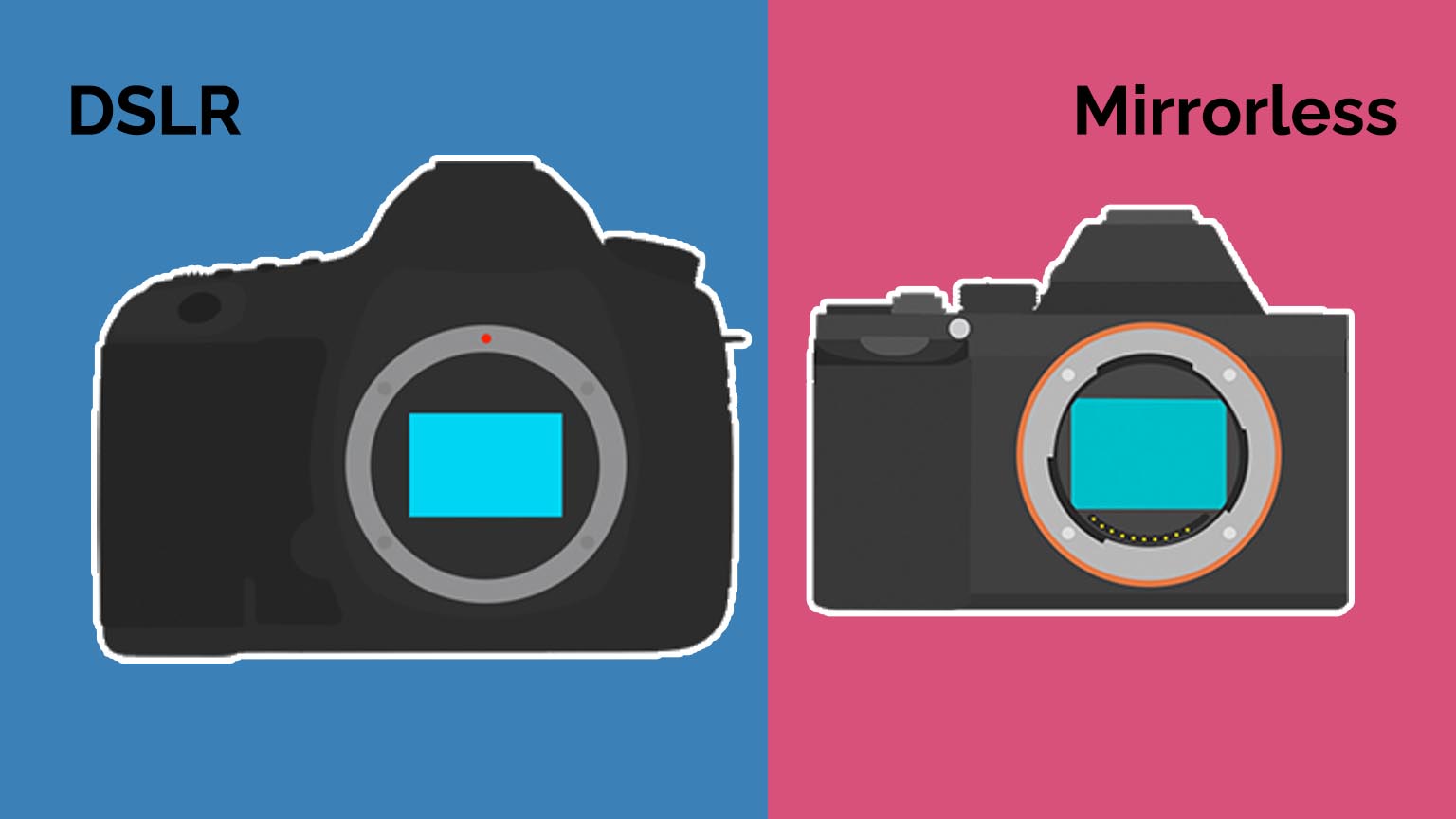
A DSLR or a mirrorless model depends on your choice when selecting a capable camera for professional photography or filming. Although the two types appear to be comparable on the surface, both feature interchangeable lenses and generally, employ similar variants of sensor size, there are several significant distinctions between them. Understanding these differences may help you decide between the two types.
Contents
What is a DSLR Camera
Digital Single-Lens Reflex is a digital SLR camera, meaning it takes pictures using a digital imaging sensor instead of photographic film. Light comes in via the lens and bounces off a mirror within the camera body to enter the viewfinder. The mirror flips down when the shutter is depressed, exposing the digital sensor, which absorbs light and records the image.
What is a Mirrorless Camera
A mirrorless camera does not have a mirror thus making it difficult to examine the image through the viewfinder. However, the more straightforward, streamlined design enables a far more compact and portable gadget.
Mirrorless Vs. DSLR Camera Comparison
Take a look at how the most crucial camera specifications and features differ between mirrorless and DSLR cameras to compare them thoroughly:
Price
Cameras are an expensive purchase. In terms of value for the money, if you compare DSLR VS Mirrorless, the results are that mirrorless is the undisputed champion. Any mirrorless camera that is relatively cheap will have a low quality resolution, short battery life, and no viewfinder.
You get roughly the same features, power, and performance with a mirrorless or DSLR and the price range will be comparable.
Lenses
Since DSLRs have been available the longest, it goes without saying that they provide a wider selection of lenses. A DSLR is currently the best option if having access to a larger selection of lenses is essential.
However, as mirrorless cameras gain more and more traction, their lens selections are now starting to catch up. To utilize DSLR-sized lenses with mirrorless cameras, adapters can be purchased from the manufacturer. Nevertheless, doing so can impact your mirrorless Camera’s focal point, zooming performance, and slow autofocus.
Battery Life
Mirrorless camera sensors are always active compared to a DSLR, which can quickly deplete battery life. Smaller mirrorless camera bodies equate to smaller batteries. Even while extra batteries are not expensive, they are an additional hassle.
Image Quality
DSLRs and mirrorless cameras may both create amazing photographs in part because they both make use of the most advanced full-frame sensors currently on the market. After all, the primary determinant of image quality is sensor size.
Neither Camera has a clear advantage over the other, even though factors like focusing, low-light photography, and camera resolution will all affect how excellent the final image is.
Video Quality
Although DSLRs have a variety of lens options, only high-end DSLR models can produce 4K or Ultra HD quality images. Mirrorless cameras have an advantage since they can capture such quality images even with certain inexpensive versions.
Recommended for you:
The Best Vlogging Cameras
Which Camera is Better, Mirrorless or DSLR?
If you compare DSLR VS Mirrorless, you will find that these cameras are two distinct species, each with unique advantages and disadvantages. The DSLR’s optical viewfinder enhances low-light photography and expands the range of available interchangeable lenses.
Mirrorless cameras, on the other hand, are lighter and more portable, can take more pictures at faster shutter speeds, and even in entry-level models, have better video quality.
Modern DSLR and mirrorless cameras show how far digital camera technology has progressed since they can produce never-before-seen image quality with remarkable performance and simplicity. Although today’s photographers may choose DSLRs, who knows what tastes the photographers of the future may have, given the speed at which photography technology is developing.

Leave a Reply